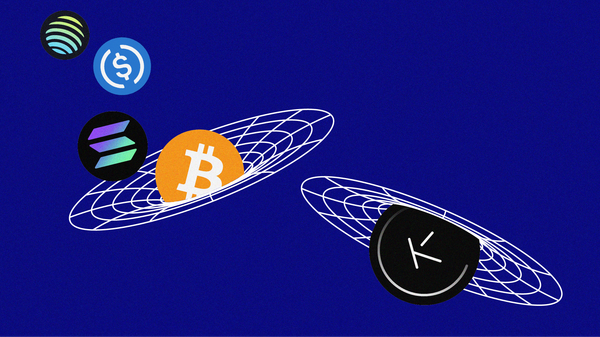The Complete Guide To BRC-20 & Inscriptions - A Strong Narrative for 2024?
Are the re-emerging Bitcoin ecosystem trends here to stay for good, or are they just noise on the chain?
Another week, another narrative to keep up with. Ordinals have been making a strong comeback in the space as of late and if you’ve been active on Twitter for the past 2 weeks, you are most likely already aware.

In this article we’ll be dissecting these emerging trends and discussing their impacts on a broader scale.
Introduction
As the potential ETF approval date draws nearer, interest in Bitcoin’s ecosystem has increased significantly with many expecting the asset to appreciate in value.
Making rounds earlier this year, Ordinals and BRC-20 tokens using its underlying tech are creeping back in to the spotlight, this time with more utility and disruption.
Anecdotal evidence from various online communities and data from search engines point towards a breakout of these trends taking place largely in China. Middle-aged people and even grandmas are getting in on the action by learning how to buy and trade BRC-20 tokens.
As per usual these are trending topics on Twitter as well, with many people jumping on the bandwagon. Big exchanges took notice of this and started listing BRC-20 tokens left and right.
Ordinals & Inscriptions
Introduced in early 2023, ordinals are based on a means to track and transfer the smallest denomination of a Bitcoin (¹⁄₁₀₀₀₀₀₀₀₀), called a “sat”, short for “Satoshi”, by assigning it a serial number based on the order of which it was mined.
Satoshis can be inscribed with arbitrary content (e.g. text, image) without the need of smart contracts, essentially making them tokenless NFTs that are hosted entirely on-chain. The inscription process requires just two transactions and can later be displayed by an off-chain indexer.
In fact, these inscriptions have been the driving force behind the substantial rise in transaction fees and slower processing times on the Bitcoin network.
The chain was congested, fees were through the roof. People minting ordinals were just burning gas at one point with collections getting sold out before their transactions even got processed, as front-ends were not able to keep up with pending transactions. That would surely signal the end of this madness? Right?

Of course not. What followed thereafter was a mass exodus of biblical proportions, to other chains. This in turn created an involuntary stress test scenario for a lot of networks.
Unsurprisingly, almost all of them managed to tough it out, with the exception of a few blockchains (Arbitrum and TON) being taken down completely and needing a timeout to catch their breath.
In the case of Avalanche, inscriptions accounted for 90% of the on-chain activity at one point, with similar numbers being reported by other platforms. It got so bad that even testnets were being targeted.
But how are inscriptions utilized outside of Bitcoin? The methodology behind this was informatively summed up by on Twitter:

What this means is that inscriptions can be created by sending yourself a 0 value transaction and adding desired media in the notes field of the transaction. For transfers the same logic is applied apart from the notes field containing the transaction hash of the inscription creation transaction you did earlier.
The rampant adoption of inscriptions outside of Bitcoin was glaringly obvious, with chains like Solana and Avalanche completely taking over the market in terms of trading volume.
Use Cases
Now that we’ve covered the technical aspects of ordinals and how inscriptions work, let’s take a look at what people are actually creating with these.
Note that the following iterations have questionable security and haven’t been thoroughly battle tested yet.
NFTs
Despite already having existing infrastructure for Bitcoin NFTs, ordinals offered an alternative and were embraced by the community immediately.
Ordinal NFTs are vastly different from those being widely used on chains like Ethereum.

In contrast to conventional NFTs, these digital artefacts are vastly cheaper to produce and use a completely different tech stack and methodology. The tracking of individual sats allows developers and artists to create unique digital art instead of the usual profile picture collections. From a collector’s perspective, this mechanism opens up new possibilities for determining the rarity of their pieces based on the on-chain data.
An example of this concept being put to use is from a metaverse protocol named BITMAP, which offers plots of land represented by Bitcoin block numbers.

BRC-20
Starting off as an experiment in a bid to create fungible tokens on Bitcoin, the experimental (strong emphasis) token standard — BRC-20, was created. This was a big step towards the expansion of Bitcoin’s ecosystem.

Many BRC-20 tokens found their way on to Ethereum through various bridges, attracting vast amounts of speculators, with the most prominent coins posting daily double digit returns while trading activity on Bitcoin was cooling down after rallying for some time.
As of today, the go-to bridge MultiBit has processed $611.86m in cumulative bridging volume, supporting 4 different chains.
CBRC-20
Also a fungible token standard on Bitcoin, CBRC-20 is conceptually similar to BRC-20 with some significant improvements, that can be attributed to using a newer version of the Ordinals client.
- lower inscription costs through a more efficient embedding process;
- simplified indexing;
This makes it a solid alternative to BRC-20 and is worth keeping an eye on for the unforeseeable future.
Conclusion
It is highly likely that inscriptions and applications stemming from it will be here to stay for good. They’ve had a profound impact on the market in a fairly short amount of time by introducing alternative approaches to existing concepts. Having plenty of space for improvement and innovation means that there will be plenty of attractive opportunities in the future, so there is no need to jump in head first without getting familiar with the waters first.
That’s all for this week - make sure to subscribe and leave a like if you enjoyed the piece.
Nothing should be construed as financial advice!





